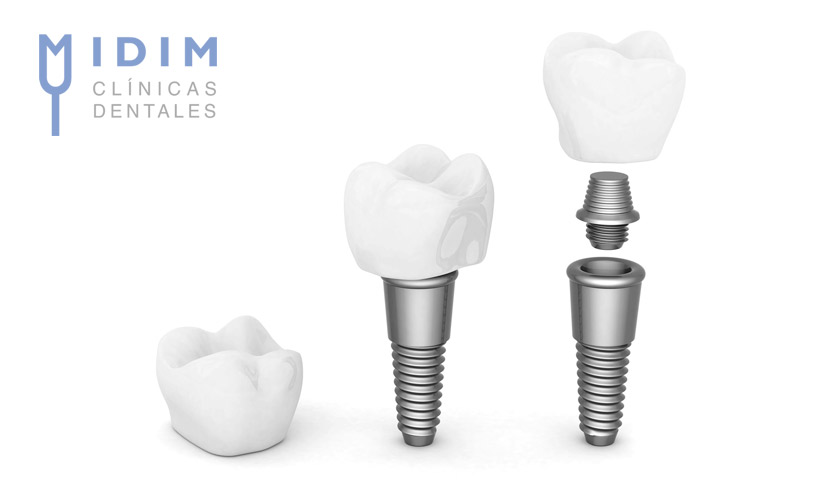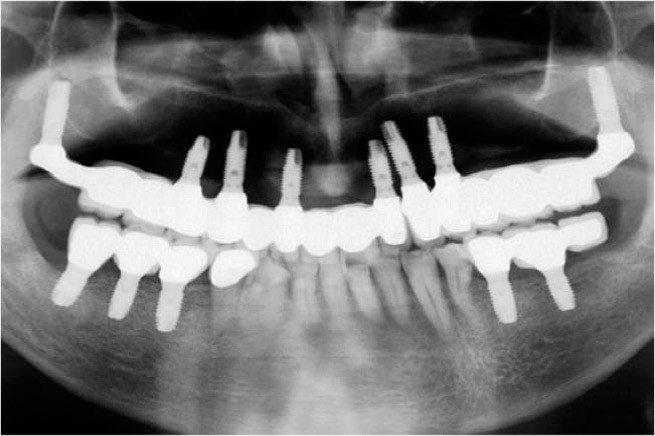PTERYGOID IMPLANTS
A pterygoid implant is inserted in the end area of the upper maxilla and joined to other implants in the frontal area of the maxilla, forming a support point.
This implantology technique is a tilted implant variant
It is an implantology technique that can be considered a tilted implant variant as it is used in cases of severe atrophy in the maxilla bone. These implants allow for a join with implants in areas further forward, providing fixed implant-based prosthesis treatments without the need for large bone grafts.

DGiven the development of implantology procedures, this technique is extremely useful today as an alternative to certain bone grafts considering it allows treatment times, the number of procedures and patient discomfort to be reduced.
A radiologic study and a specialised assessment are recommended in order to discern the suitability of this treatment for the patient. This type of implant is designed for patients who have a deficient bone quality and quantity in the posterior sections of the maxilla, excessive pneumatisation of the maxillary sinus, or limited bone height or width in the alveolar ridge, all of which are conditions that prevent the insertion of conventional implants without bone grafts being performed.
Fill in our contact form if you would like to book an appointment at our dental clinic in Valencia:
How is this implantology technique performed?
Pterygoid implants are inserted via simple surgery under local anaesthetic. The main difference between this technique and the technique employed for conventional implants is that long implants are used (with a minimum length of 16-20 millimetres) in order to penetrate up to the pterygoid processes. The implant is tilted towards the back of the mouth to reach the process region where it is possible to find sufficient bone to fix an implant, even in cases with a bone shortage in other areas. Osteotomes (similar to nail punches) are frequently used alongside drills commonly used in implantology, given that they allow for greater control and the little bone available may be condensed in an area instead of removing it when working the hole for the implant.

Benefits of these dental implants
Pterygoid implants are an alternative technique to the more commonly known sinus lift. They have two significant advantages over this technique: placement of pterygoid implants preserves the integrity of the maxillary sinus, meaning these implants may be inserted in cases of sinus pathology in which a graft into the sinus would not be recommended; furthermore, pterygoid implants are inserted in the patient’s own bone, which reduces treatment times in comparison with the sinus lift technique, in which the patient must wait several months for the bone graft to consolidate.

Pterygoid implants are recommended for edentulous patients missing back teeth as implants may be inserted in the premolar area, but not the molar area. As such, the patient can receive fixed teeth with a bridge between the normal premolar implants and the pterygoid implant.
They are also designed for patients with no teeth as a powerful replacement element that allows fixed prostheses to be prepared and positioned, and they are also recommended for patients who seek a shorter implantology treatment.
Other treatments:
· Cavities and endodontics
· Cosmetic dentistry
· Paediatric dentistry
· Orthodontics
· Periodontics
· Dental prosthesis
· Digital dentistry
· Sleep apnoea




